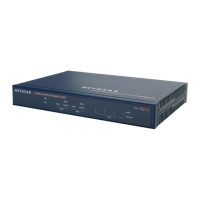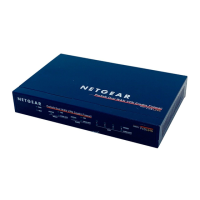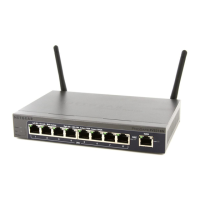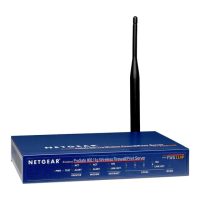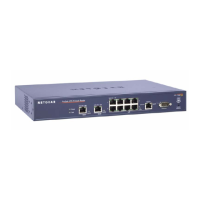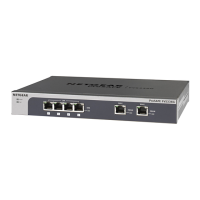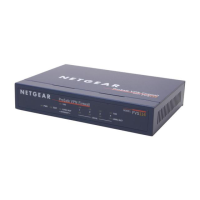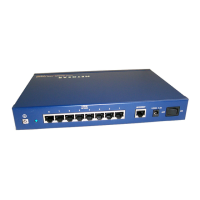Firewall Protection
125
ProSecure Unified Threat Management (UTM) Appliance
Inbound Rules (Port Forwarding)
If you have enabled Network Address Translation (NAT), your network presents only one IP
address to the Internet, and outside users cannot directly access any of your local computers
(LAN users). (For information about configuring NAT, see Configure Network Address
Translation (All Models) on page 76.) However, by defining an inbound rule you can make a
local server (for example, a web server or game server) visible and available to the Internet.
The rule informs the firewall to direct inbound traffic for a particular service to one local server
based on the destination port number. This process is also known as port forwarding.
Bandwidth Profile Bandwidth limiting determines the way in which the data is sent to and from your host.
The purpose of bandwidth limiting is to provide a solution for limiting the outgoing and
incoming traffic, thus preventing the LAN users from consuming all the bandwidth of the
Internet link. For more information, see Create Bandwidth Profiles on page 162.
Bandwidth limiting occurs in the following ways:
• For outbound traffic. On the available WAN interface in the primary WAN mode and
auto-rollover mode, and on the selected interface in load balancing mode.
• For inbound traffic. On the LAN interface for all WAN modes.
Note: Bandwidth limiting does not apply to the DMZ interface.
Traffic Meter Profile Select a traffic meter profile to measure and control traffic that is downloaded, uploaded,
or both. The traffic meter profile applies only to traffic that is covered by this rule.
Depending on the configuration of the traffic meter profile, when traffic has reached its
configured limit, traffic is either logged or blocked. For information about creating traffic
meter profiles, see Create Traffic Meter Profiles on page 166.
Note: You cannot assign traffic meter profiles to LAN DMZ firewall rules.
Application Control Select an application control profile to allow, block, or log traffic for entire categories of
applications, for individual applications, or for a combination of both. The application
control profile applies only to traffic that is covered by this rule. To create a new
application control profile, select + Create New from the Application Control drop-down
list. The Add or Edit Application Control Profile pop-up screen displays. For information
about creating and enabling application control profiles, see Configure Application
Control on page 226.
Note: You cannot assign application control profiles to LAN DMZ firewall rules.
NAT IP The setting that specifies whether the source address of the outgoing packets on the
WAN should be assigned the address of the WAN interface or the address of a different
interface. You can specify these settings only for outbound traffic on the WAN interface.
The options are:
• WAN Interface Address. All the outgoing packets on the WAN are assigned to the
address of the specified WAN interface.
• Single Address. All the outgoing packets on the WAN are assigned to the specified
IP address, for example, a secondary WAN address that you have configured.
Note: The NAT IP option is available only when the WAN mode is NAT. The IP address
specified should fall under the WAN subnet.
Table 27. Outbound rules overview (continued)
Setting Description
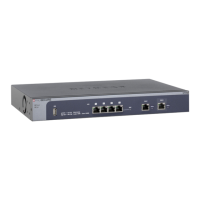
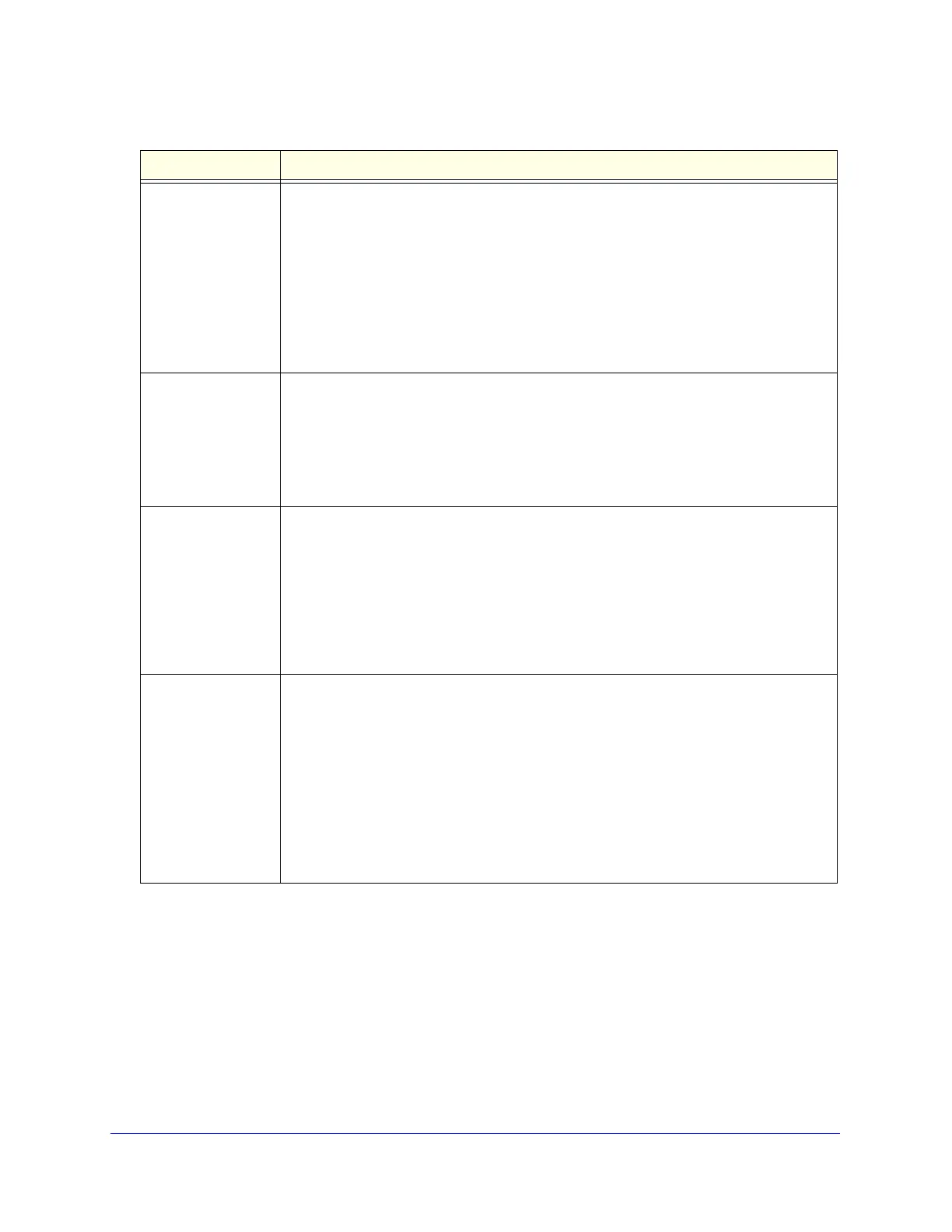